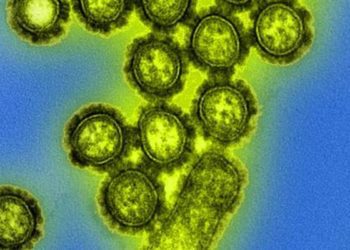Live influenza pediatric vaccination not associated with better protection than inactivated vaccine
1. In a randomized blinded trial of 1186 vaccinated children and 3425 nonvaccinated individuals, immunization with live attenuated influenza vaccine (LAIV) was not shown to provide better direct or community protection than inactivated influenza vaccine (IIV).
2. Although LAIV was not shown to provide better protection than IIV, both vaccines demonstrated similar levels of direct and community protection.
Evidence Rating Level: 2 (Good)
Study Rundown: Influenza is a major contributor to morbidity and mortality. For public health, it is important to consider both the direct and indirect protection capabilities of LAIV and IIV. However, most flu vaccine studies only evaluate direct protection. To test pediatric vaccination of LAIV versus IIV, Hutterite colonies were chosen because their members live communally in rural areas that are relatively isolated and where flu infection often occurs.
Healthy children ages 3-15 were eligible to receive a vaccine. All other residents were eligible as unvaccinated participants. No significant difference in influenza infection rates was found between LAIV and IIV vaccination groups. Between the LAIV and IIV colonies, relative attack rates between vaccinated children and unvaccinated participants were similar, demonstrating that LAIV does not provide better protection against influenza than IIV. There may be other reasons for selecting LAIV or IIV for pediatric flu vaccine, but in terms of additional benefit, none was found for LAIV over IIV.
Strengths of this study include blinding of participants, investigators, and evaluators; rigorous surveillance; geographic considerations to help account for influenza transmission differences; study data covering 3 influenza seasons; evaluation of clinical outcomes; and reduction of selection bias by assigning vaccinated groups after enrollment. A limitation of the study are the differences that exist between Hutterite communities and other community settings.
Click to read the study in the Annals of Internal Medicine
Relevant Reading: Live attenuated versus inactivated influenza vaccine in infants and young children
In-Depth [randomized controlled trial]: This study enrolled 4611 participants from 52 Hutterite colonies. To control for regional differences in influenza transmission, colonies within 5 geographic regions were randomly assigned to the LAIV or IIV group. Investigators, study coordinators, surveillance staff, and members of the monitoring board for data and safety were all blinded. For blinding purposes, children in the LAIV group also received a 0.5-mL saline injection, and children in the IIV group also received 0.2-mL of intranasal saline. Residents were followed for 3 influenza seasons. During the influenza surveillance period, participants were evaluated 2x/week for influenza symptoms. Infection was confirmed through RT-PCR viral RNA detection in respiratory samples, with further testing completed on positive RT-PCR results to distinguish between wildtype and vaccine strains.
Infection rates between influenza A or B were similar (5.3% vs 5.2% for LAIV and IIV, respectively). For all influenza virus infections, no significant difference was found between the two vaccines (pooled HR 1.03, 95%CI 0.85 to 1.24). Also, no significant difference was found in all participants between influenza A (HR 1.01, 95%CI 0.59 to 1.74) and B (HR 1.02, 95%CI 0.76 to 1.35) or between the A and B viral strains in vaccinated children (HR 0.97, 95%CI 0.71 to 1.34).
Image: PD
©2016 2 Minute Medicine, Inc. All rights reserved. No works may be reproduced without expressed written consent from 2 Minute Medicine, Inc. Inquire about licensing here. No article should be construed as medical advice and is not intended as such by the authors or by 2 Minute Medicine, Inc.







